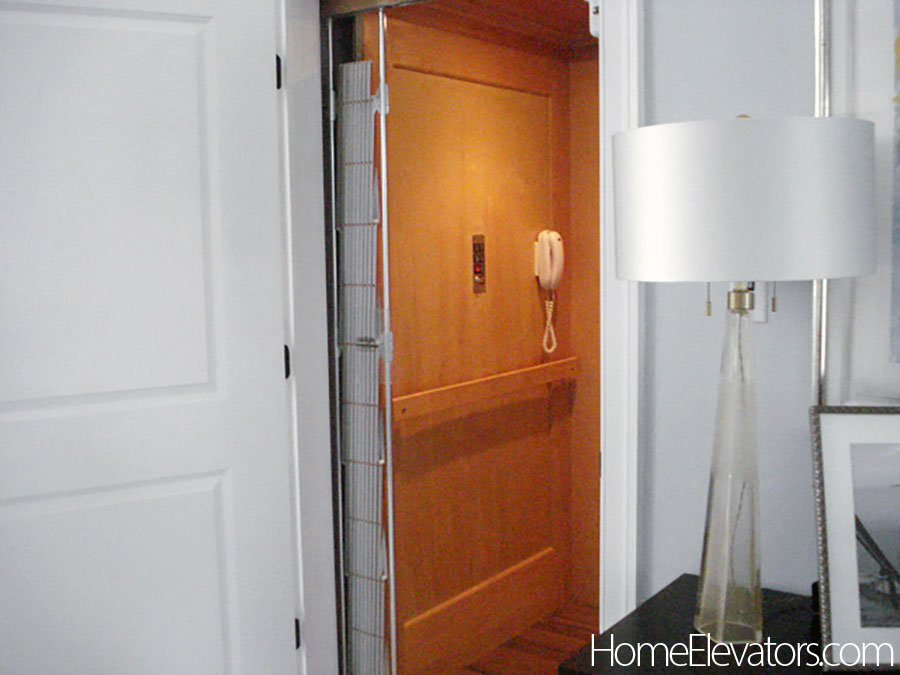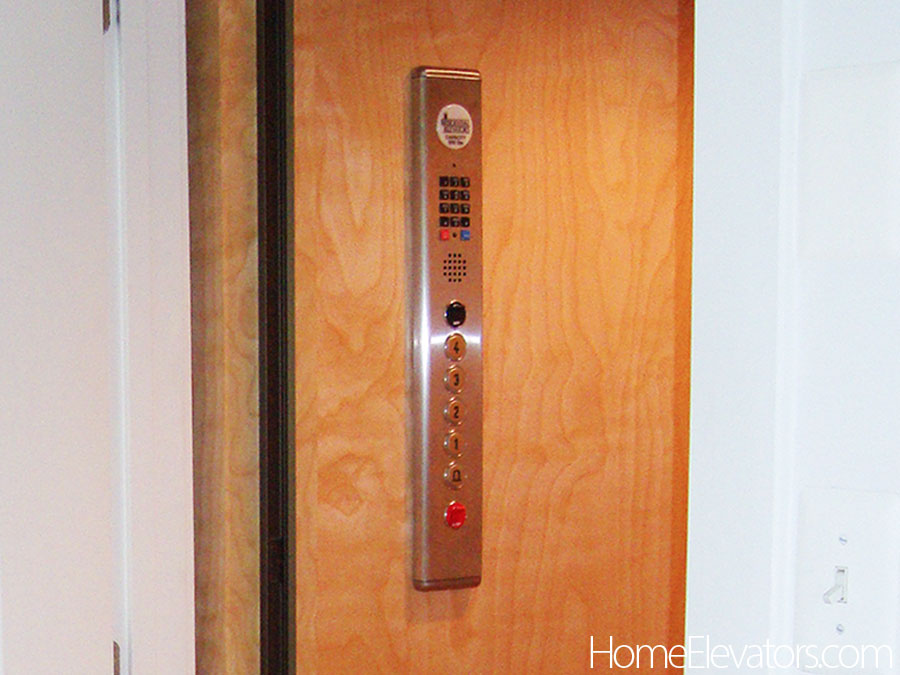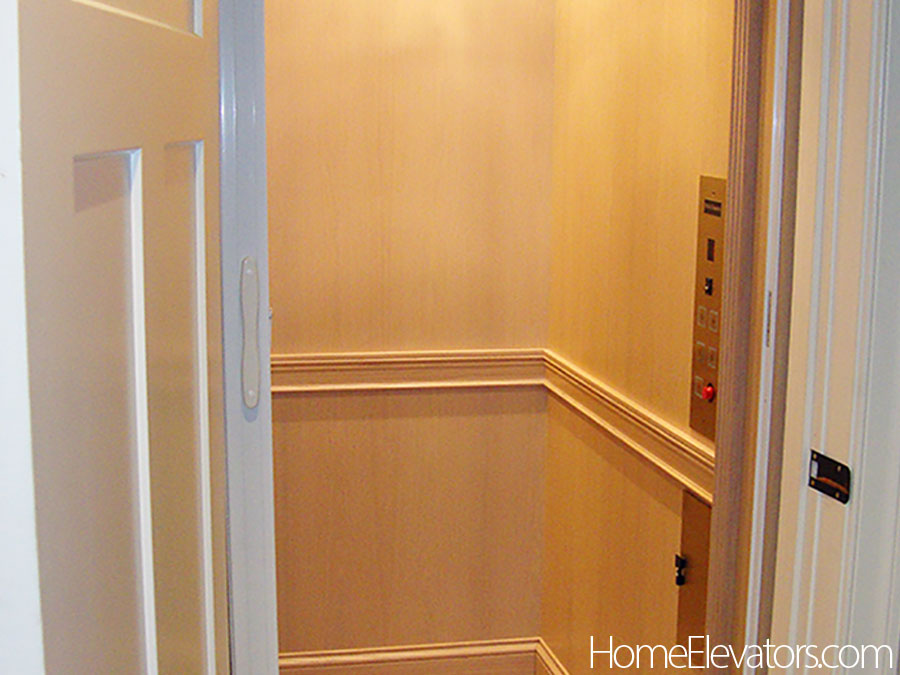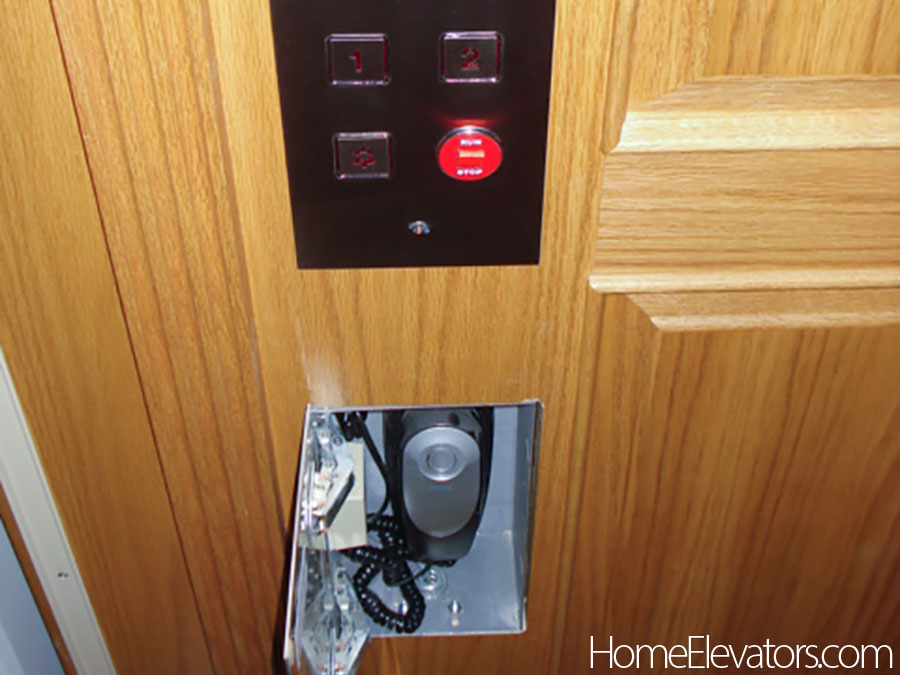Residential Elevator Phone Systems & The Importance
A residential elevator must always have an active phone that is checked for operation on a normal basis. It is required by the ASME A17.1 elevator code to provide for a means of two-way communication from the cab interior. Elevator phones are not just a convenience they’re a critical component of elevator safety and code compliance. An elevator phone can be as simple as the basic wall-mount model shown here. If you want something with a smooth design and tucked out of the way there are also models that can be recessed into a cabinet in the elevator cab wall and even cellular versions.

The most practical models are now built into the car operating panel and typically ordered when the elevator is installed. The system is tied into an existing phone line and does not require a separate dedicated line for residential applications. While more expensive, phones can always be retrofitted and if for some reason you don’t have one installed you should have it done immediately. There are several providers for this type of phone, one that we have used over the years that has worked well is manufactured by a company called Rath Microtech. For information on cellular systems check out MyLinkLine Communications.
Phone in elevator control panel
A phone can be integrated into the cab’s control panel as a built-in emergency communication system. Typically connected to a dedicated landline the phone is installed behind a speaker grille allowing riders to make a call at the push of a button in case of an emergency. This setup provides compliance with safety codes that require two-way communication, while maintaining a clean and accessible design within the panel. Some modern systems also support hands-free operation and programmable dialing to automatically connect users to a monitoring service or designated contact.

Phone recessed in the elevator wall
A phone can also be recessed directly into the wall panel to create a low-profile, easily accessible communication feature. This design places the phone behind a flush-mounted cover or within a shallow pocket, allowing it to remain unobtrusive while still meeting safety code requirements for emergency communication. The recessed installation protects the device from accidental damage and preserves the aesthetic of the cab interior, especially in custom or high-end designs. Depending on the model, the recessed phone may include a handset, a speakerphone with a call button, or a hands-free intercom system, all wired to connect with a monitoring service or emergency contact line.

Elevator phone cabinet
Recessed phone cabinets are commonly installed just below the cab operating panel in a home elevator. Placing the phone at a lower height ensures it can be easily reached from a seated position, improving usability for individuals with limited mobility and wheelchairs. Recessing the cabinet into the wall keeps the device protected and out of the way, maintaining clear space within the cab while preserving a smooth finished appearance. Whether it houses a handset or a hands-free speakerphone, this installation approach keeps the phone both functional and discreet, providing a line of communication without compromising the elevator’s design or accessibility.

Whether integrated into the control panel or recessed below it, an elevator phone is an important safety feature. Thoughtful placement and design ensure that the phone is easy to use, compliant with safety standards, and readily reachable in an emergency. By choosing the right phone setup and installation method, you can add a layer of security and peace of mind without compromising the style or comfort of the elevator cab.